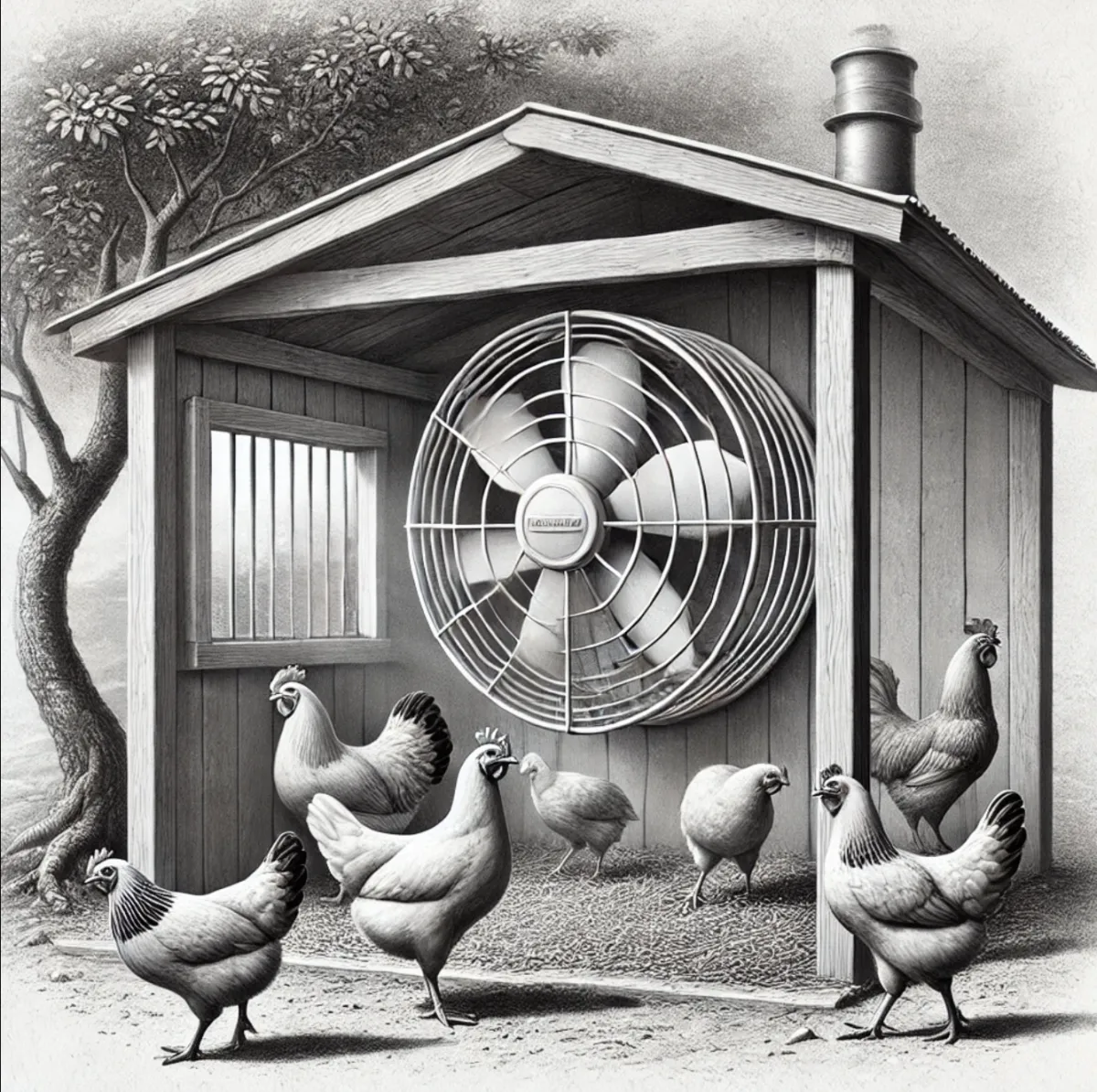
Do Chickens Need a Fan? The Truth About Coop Ventilation and Summer Cooling
Do Chickens Need a Fan? The Truth About Coop Ventilation and Summer Cooling
I’ve always been the type to keep things simple. If something works, you don’t mess with it. My chickens have been handling summers on the High Prairie just fine without a fan. Plenty of old-timers will tell you the same thing: Chickens don’t need a fan. They need good ventilation, shade, and fresh water.
And for most setups, that’s true.
But here’s the thing: not every coop is the same. Not every flock is the same. And when you start pushing housing density, when your birds are packed in a little closer than a backyard setup, things change. The way heat builds up inside the coop changes. The way moisture lingers overnight changes. What worked before doesn’t always work forever.
That’s why there will be a fan for the next coop—the egg farm in a box.
Not because I suddenly think every backyard coop needs one, not because I’m trying to baby the birds, but because when you’re running a higher-density system, airflow becomes a whole different problem.
Why a Fan? Why Now?
I never used to think much about fans in a coop, but I didn’t need to. The open-air design, good cross-ventilation, and deep bedding to regulate moisture worked. Sure, it got hot in the summer, but that’s what shade is for. The birds adapted.
Then, I started looking at larger-scale operations. Not factory farms—smart farms. Systems that work with nature, not against it. And you know what I noticed? Even in well-designed coops, a little air movement makes a big difference.
When more birds are in a space, their body heat raises the temperature. Their breathing adds moisture. And while good ventilation helps, sometimes it’s not enough—especially on those dead-still summer days when the air sits there, thick and heavy.
A fan isn’t about making the coop colder. It’s about keeping the air moving so heat and moisture don’t build up. That’s the difference between a coop that runs efficiently and one where birds start to struggle.
The Right Way to Use a Fan in a Coop
Now, let’s get one thing straight: I’m not talking about setting up a big box fan at ground level and blasting chickens in the face. That’s not cooling them down—that’s stressing them out.
A fan in a coop has to be done right.
It’s about circulation, not wind. The fan should be mounted high up, just moving air around, not creating a draft at roost level.
It’s not a replacement for ventilation. If your coop doesn’t already have proper vents, a fan won’t fix that. Hot air needs a way out for a fan to be useful.
It has to be safe. Coop dust and feathers get everywhere. A cheap fan with an exposed motor is a fire hazard waiting to happen. A good sealed motor fan or an exhaust-style setup is the way to go.
The plan for Egg Farm in a Box is to have a fan running on a thermostat and humidity sensor. That way, it’s not running all the time—just when the heat and moisture hit a level that needs correction. That’s the key: We’re not forcing a system where it isn’t needed. We’re designing one that works with the environment to make things better.
But Do Backyard Chickens Need a Fan?
The answer is probably not for most folks with a standard backyard coop. If you’ve got:
Good shade
Proper ventilation
Cool, clean water available at all times
…then your birds will be just fine without a fan.
But if you’ve got high housing density, if your coop retains heat, or if you live somewhere where the air sits heavy with no breeze, then yeah—moving the air a little might not be a bad idea.
I still believe chickens don’t need a fan in the traditional sense. However, in the right setup, it can be a tool that makes the whole system work better. And that’s why we’re adding one to Egg Farm in a Box.
Because it’s not about what worked for me yesterday.
It’s about building something that works for tomorrow.
Ultimately, it’s not about whether chickens need a fan—it’s about designing the right system for how you raise them. Whether it’s managing airflow, maximizing forage, or rethinking feed, the key isn’t just reacting to problems—it’s engineering solutions before they happen.
Farming isn’t just about solving today’s problems—it’s about designing a system that prevents them in the first place.
That’s something I’ve learned the hard way.
At first, I thought fans were unnecessary. Chickens have survived without them for centuries, right? But then I realized something: it’s not about whether something was necessary—it’s about whether it makes the system better.
And that applies to everything in farming.
Because when you stop reacting and start thinking ahead—about airflow, feed, soil, water—you stop just keeping chickens. You start building something resilient. Something that works with nature instead of against it.
That’s what Thinking Outside the Soil is all about.
It’s not just about chickens. It’s about rethinking how we farm—how we design food systems that don’t just survive, but thrive.
If you’re ready to farm differently, this book is where it starts.
